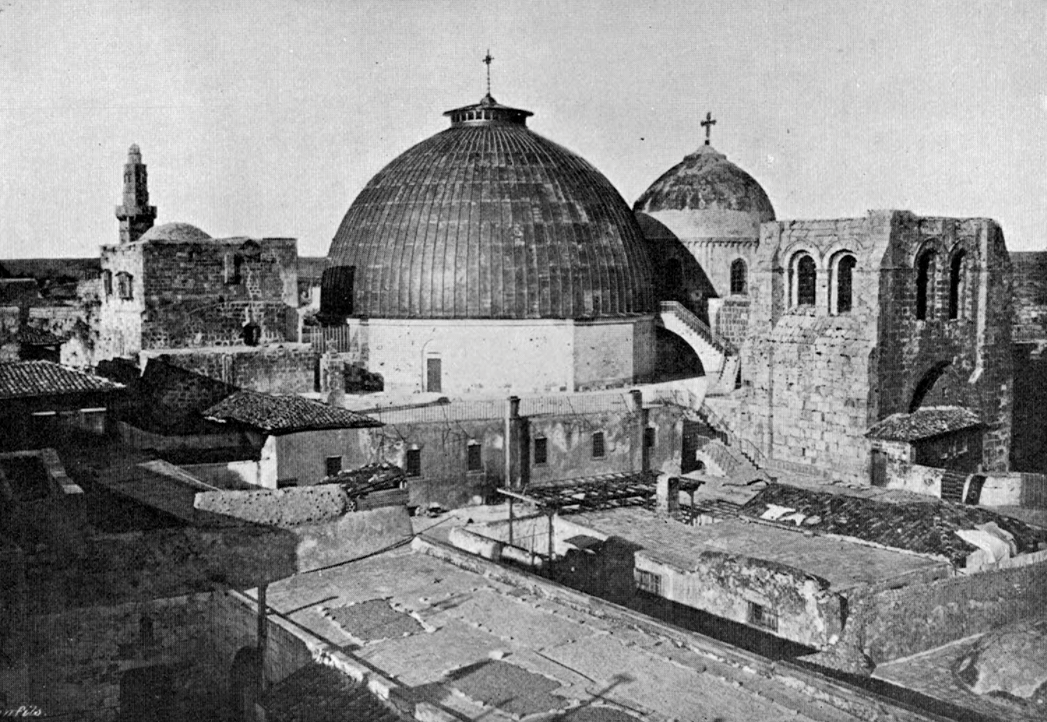The Rock the Builders Rejected
The Friday Reflection by James M. Kushiner
April 2nd, 2021

T
he first Good Friday is woven tightly into history: The Crucifixion of Jesus took place publicly in Jerusalem under Pontius Pilate, fifth governor (26-36 AD) of the Roman province of Judea.
All four Gospels present the trial of Jesus and his Crucifixion in much detail, while some of Jesus' disciples (Peter) and a later apostle (Paul) also reference the Crucifixion in their epistles.
A stone excavated at Caesarea in 1961 is inscribed with the name of Pontius Pilate. Pilate is named in all four Gospels, as well as by the first-century Jewish historian Flavius Josephus, who wrote that Pilate "condemned [Jesus] to the cross." The second-century Roman historian Tacitus wrote that "Christus...suffered the extreme penalty during the reign of Tiberius at the hands of one of our procurators, Pontius Pilatus." Both Jesus and Pilate are thus linked by four New Testament writers, a Jewish historian, and a Roman historian.
Also, Mar Bar-Serapion, a stoic philosopher from Syria wrote his son, perhaps as early as AD 73, about the execution of the "wise king" of the Jews:
"What advantage did the Jews gain from executing their wise king? It was just after that their kingdom was abolished."
Gospel accounts of the trial of Jesus affirm that he was charged for claiming to be "King of the Jews." They also affirm that a sign was placed on his cross saying, "This is the King of the Jews." (John puts it: "Jesus of Nazareth, King of the Jews.")
So where was Golgotha? "Both literary and archaeological evidence help us to identify Golgotha with surprising precision," is the conclusion of Eckhard J. Schnabel, in his magisterial Jesus in Jerusalem: The Last Days. He provides numerous clues from the Gospels—it was just outside the city, there was a garden there, and a new (unused) tomb—and evidence from archaeology and history.
History and archaeology indicate that Golgotha was in an abandoned rock quarry which included several rock-hewn tombs. It took about fifty days of labor to cut out such a tomb—only the wealthy could afford one. The Gospels affirm that a rich man, Joseph of Arimathea, received permission from Pilate to place the body of Jesus in his own tomb, "cut out of the rock."
Everyone would have known where Golgotha was. Followers of Jesus knew where his tomb was as well. The early Jerusalem Christians surely would know the site, even after Jerusalem fell to the Romans in AD 70. Sixty-five years later, in AD 135, the Emperor Hadrian saw to it that a pagan temple to Venus was built on a site that presumably had been important to the Christians. The old rock quarry was filled in to build a pagan complex on top of Golgotha.
Less than two hundred years later, Macarius, bishop of Jerusalem, asked Constantine to demolish Hadrian's temple. Eusebius (260-339) reported, "as layer after layer of the subsoil came into view, the venerable and most holy memorial of the Savior's resurrection (that is, the empty tomb), beyond all our hopes, came into view." The pagan temple was replaced by the Church of the Holy Sepulchre.
Within the Church of the Holy Sepulchre today is both the traditional tomb of Jesus and the traditional site of Golgotha (Calvary).
On the First Good Friday, "Joseph [of Arimathea] bought a linen shroud, and taking [Jesus] down [from the cross], wrapped him in the linen shroud and laid him in a tomb that had been cut out of the rock. And he rolled a stone against the entrance of the tomb. Mary Magdalene and Mary the mother of Joses saw where [Jesus] was laid." (Mark 15:46-47)
The distance from the Cross to the Tomb is only about 164 feet. The women who stood at Calvary and saw Jesus die not only remained to see the place of Jesus' burial, they remembered it, as did the followers of Jesus in Jerusalem thereafter.
As to subsequent events concerning Jesus of Nazareth, "wise King of the Jews," at the Tomb and Beyond...that's another chapter, one still being written. We are invited to be part of it. Alleluia!
Yours for Christ, Creed & Culture,

James M. Kushiner
Executive Director, The Fellowship of St. James
—James M. Kushiner is Executive Editor of Touchstone: A Journal of Mere Christianity, and Executive Director of The Fellowship of St. James.






